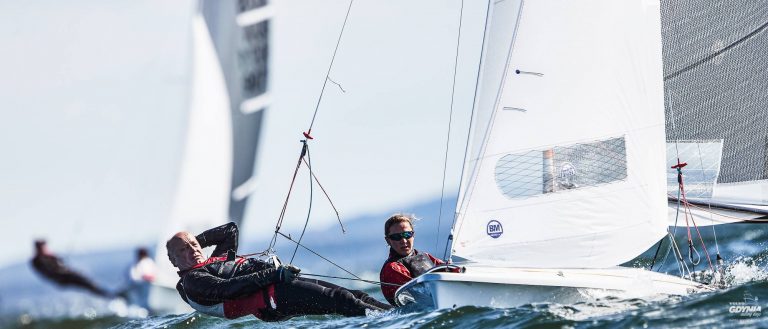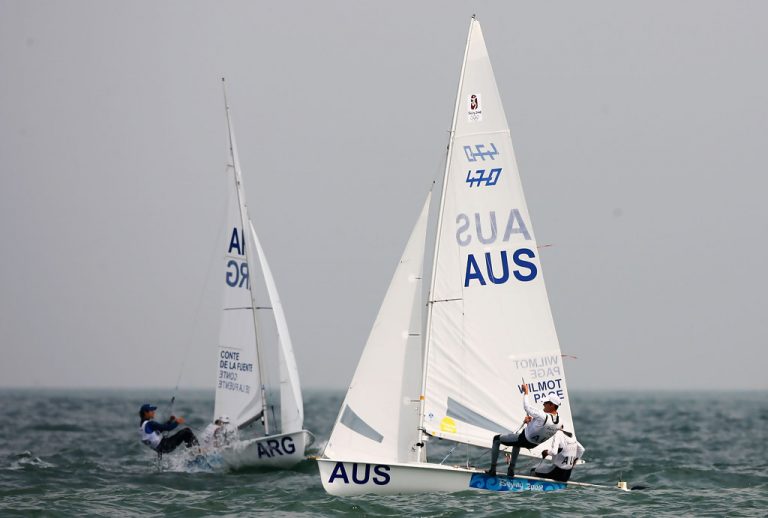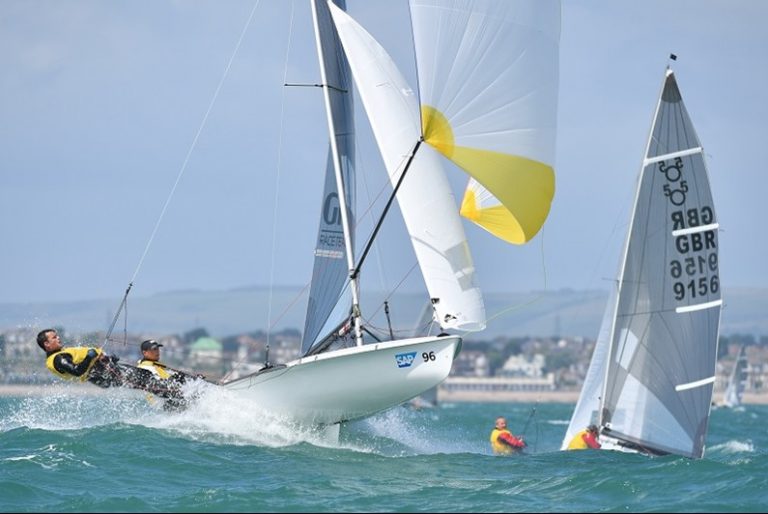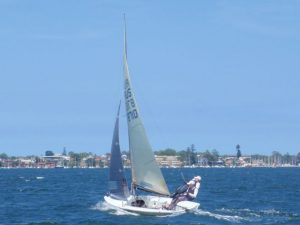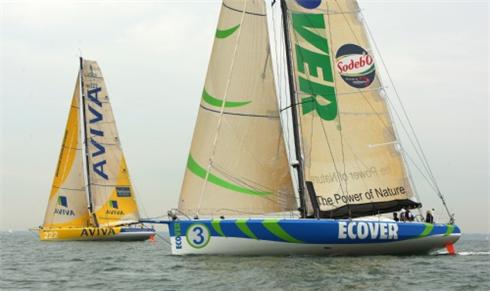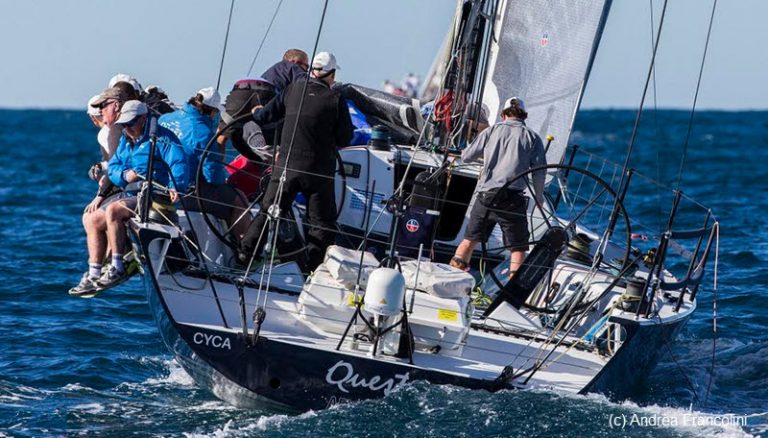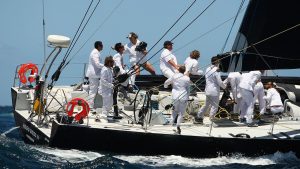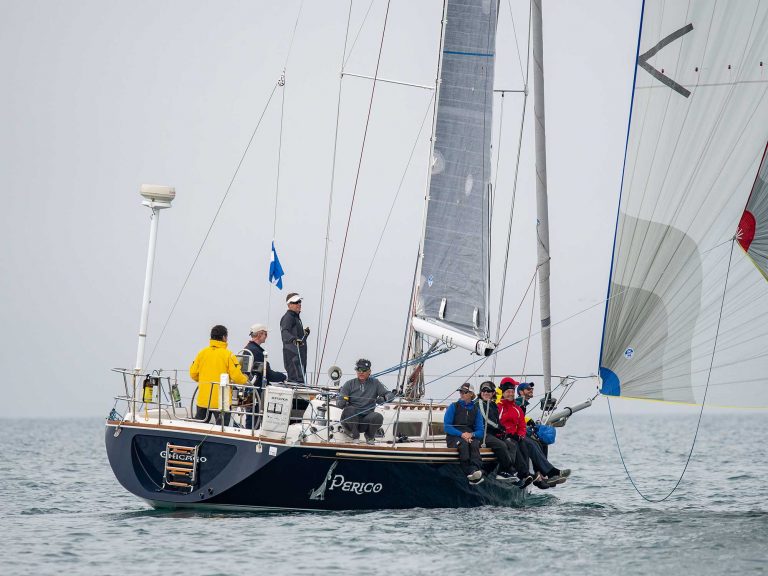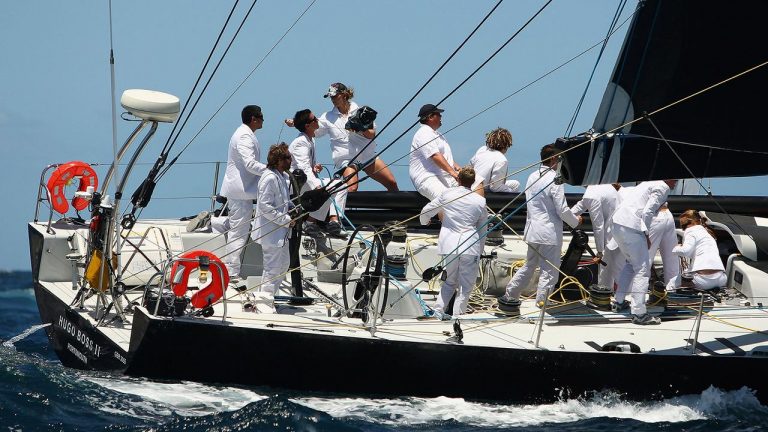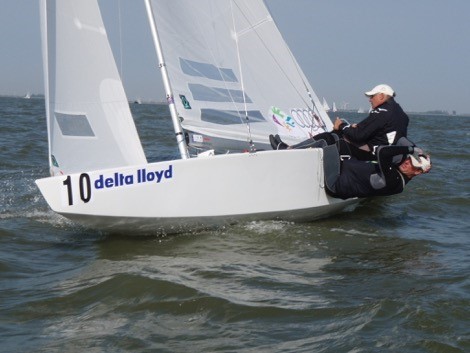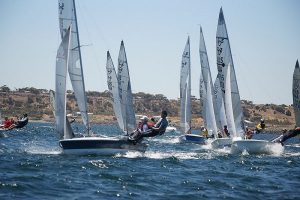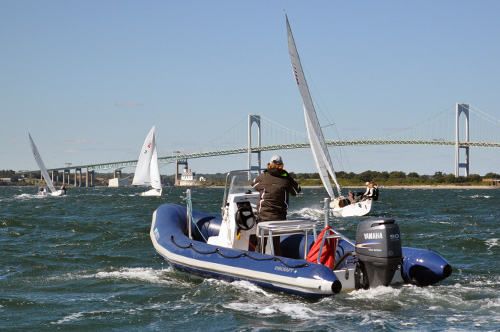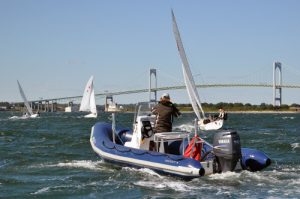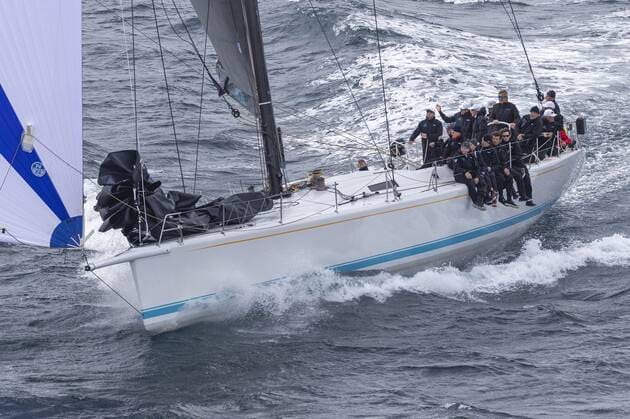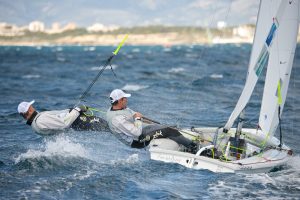
Who better to get help with boat speed issues than Mat Belcher, current Olympic Gold medallist in the 470 class from Tokyo 2021. Olympic Gold Medalist Tips For Boatspeed and Changing Gears
I have copied below excerpts from an interview that I did with Mat in 2017 while he was waiting at the airport to travel to yet another overseas regatta.
Brett: Where would you look to change gears, before or after a puff hits? If you can see a puff coming towards you, do you start to make a few changes before or wait until it gets there?
Mat: Yeah, we do, we’re constantly…and I don’t know whether, I guess, my experience in this kind of thing is so relevant across classes because we’re constantly changing gears.
Every five seconds we’re doing something, whether the gust is approaching, just before the gust, during the gust, after the gust, or during the lull.
I think the gusts are very important but equally important is also the lull.
That’s quite critical…and usually, that’s actually where you lose most of your opportunity to gain is actually during the lull and responding in time to make sure that you’re continuing the speed that you’ve harnessed, all the power, and really trying to get through that lighter period.
Brett: So how do you power up and power down with special reference to the order you do things in? What’s the best way to power up?
Mat: It’s really quite boat-specific… Gold Medalist Tips
I think you’ve got the usual basic controls. You’ve got your out haul, you’ll let your Cunningham off, you’ll let all the vang off, and you can put your centreboard down, you can put your jib track forward.
There are so many different things, and depending on your boat if you can control your rake, you can maybe bring your rake up to match.
You can move forward a little bit in the boat. You can also possibly move your main sheet bridle a little bit more to windward.
Brett: There’s a lot to remember, and I guess it all comes back to that time in the boat. It all needs to become second nature, you don’t have to think about it. The other thing is having a system that works properly…
Mat: Gold Medallist Tips For Boatspeed & Changing Gears – We talked about time, that’s a critical part. Spending time in the boat, but it’s also your understanding.
So typical…for me, it’s typically that I sail a lot of different classes, and when we have discussions about what different controls do on the boat, it surprises me that a lot of people just don’t know.
They don’t know when they pull that rope, what’s the effect or what’s that going to do?
It’s very difficult if you’re in a racing environment and the gust is very short, to do all these controls.
If you don’t know what it’s going to do, that’s quite a limitation.
Typically when you buy a new dishwasher, or you’re buying something, you don’t read the manual. I don’t read the manual at all.
My wife always tells me that “You got to read the manual, how do you know how to put it together?”
It’s the same when you get a boat for the first time or you’re sailing a 505 for example.
You’ve got to really know and have the feel and play around, and just use all the controls and see what they do, and then you’ve got a much better ability with your added understanding of them.
Practice, keep changing.
Brett: What are some of the common mistakes you see racing sailors make when they change gears? Gold Medalist Tips
Mat: Different people obviously make different mistakes. I think trying to stick to the basics is critical. Make sure you’re doing things you know and know you can do well and quickly.
That would probably be depending on whatever level you are at. Make sure that you do the basics. The basics is just changing the vang tension. Then transitioning to your Cunningham and then maybe your centre board.
In a two-person boat, look at your weight control fore and aft in the boat. Just do the simple things right, you can’t really go wrong.
If you have the time and more experience, then you can really start to refine that. To get that extra meter or extra half a meter. The basics, from what I see most commonly, is that people are just trying to look at the small details. They over-complicate it without actually doing the simple things.
Brett: If you had to help somebody in the middle or towards the back of the fleet most of the time, what is the one thing you would say to them that they need to do to start moving up the leaderboard?
Gold Medallist Tips For Boatspeed & Changing Gears – Preparation.
Focusing on your boat preparation or your crew preparation. The biggest thing for me is that you come to an event and everything’s already done.
It’s the work that…I guess at our level, is done outside of the racing environment.
Next, it’s preparation, it’s the sail testing, it’s the time in the gym, it’s where you stay in the accommodation, it’s the training coming into it, the loading, and really looking at the detail.
Then it’s usually things you can’t see that actually make the difference, and for me it’s just preparing, preparing well.
#sailingtowin #sailing #yachtrace #sailcoach #sail #sailboatrace
FREE BOOK – MORE TIPS!


